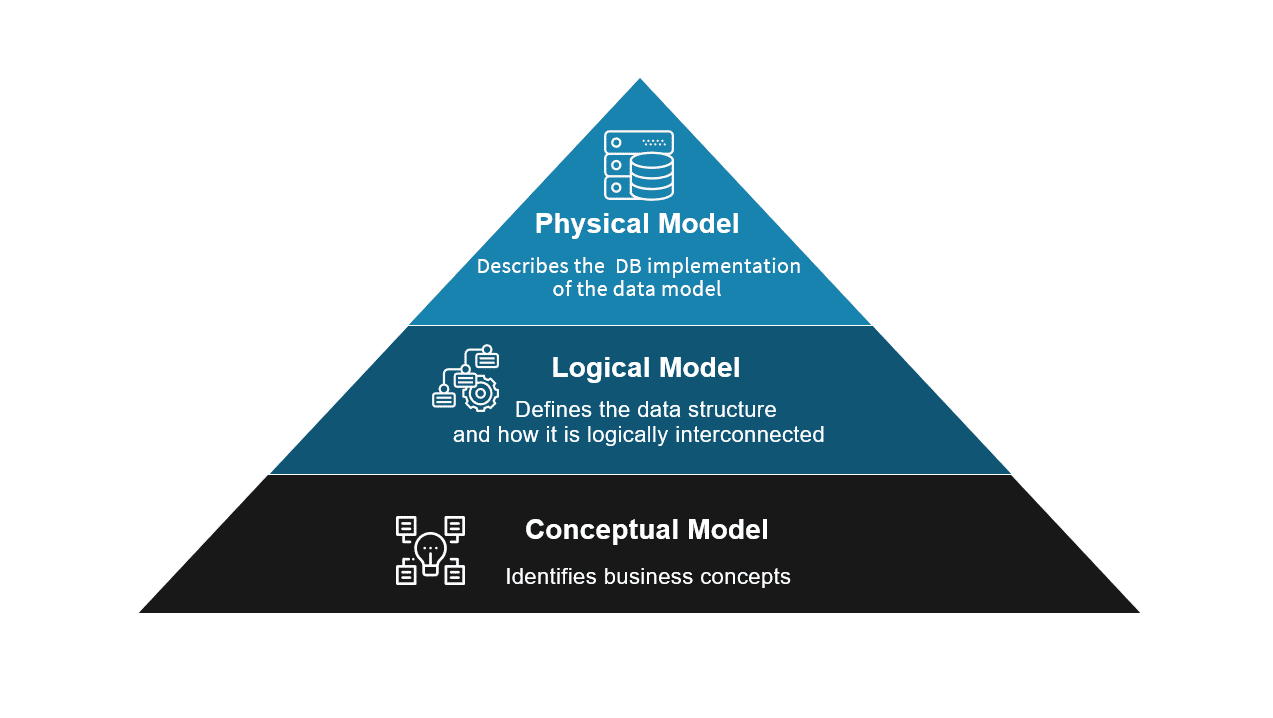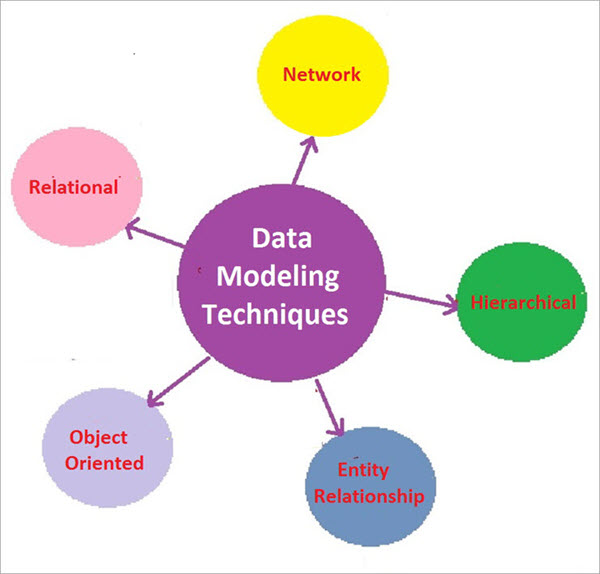In this modern era, Data is changing how the world works. Whether it is about finding new ways to cure diseases, improving a company’s profits, or showing you personalized ads on social media, data plays a key role in each and every field.
This data is basically an information that machines can read and process. But do you think that all data available on the internet is useful for companies? For example, customer data is not useful to a product team unless it is linked to specific product purchases.
This is where Data Modeling shows its role. Data Modeling is the process of organizing data into a structure that makes sense. It turns complex data into useful information that companies can use to make decisions and plan strategies. According to LinkedIn, Data Modeling is currently one of the fastest-growing careers all over the world. So, let us dive into the topic ahead to understand data modeling types, their concepts, tools, and much more.
What Is Data Modeling In Software Engineering?
Data Modeling in software engineering is the process of representing and organizing data structures in a simpler way. It uses diagrams, symbols, and text to represent data and shows how they relate to each other. This process is the first important step in defining how data is structured and used in a system.
Data Modeling involves creating data models that describe how data is connected with each other. These models are then eventually used to build databases or update old software systems. By using data modeling, companies ensure consistency in how data is named, organized, and secured, which ultimately helps in improving their data analysis process. The main focus is on making data available and well-organized to the team, regardless of how it is applied.
Types Of Data Models
Designing a database or information system starts with a simple idea and gradually becomes more detailed. Data models, which represent the structure of the data, can be grouped into three types based on how detailed they are: conceptual, logical, and physical.
The process usually begins with a conceptual model, then moves to a logical model, and finally ends with a physical model. Let us understand each of these models in detail with the help of the diagram given below:

1. Conceptual Data Models
These models are also known as domain models and they basically give an overview of what the system will include, how it will be organized, and the main business rules involved. Conceptual models are created early in the project to help in gathering requirements. They identify important things that need to be represented in the system, their attributes, and how they relate to each other. These models also consider security and data integrity, but they are usually simple and straightforward.
2. Logical Data Models
Logical models are more detailed than conceptual models. They describe the data and relationships in the system more precisely, often using formal notation systems. Logical models also define data attributes, such as data types and sizes, but they don’t get into technical system details.
These models are sometimes skipped in agile or DevOps practices but are useful in projects that are data-focused, like designing data warehouses or reporting systems.
3. Physical Data Models
Physical models are the most detailed data models, they basically show how data will be stored in a database. These models provide a final design that can be implemented as a relational database. They include tables that represent relationships between entities, along with primary and foreign keys to maintain these relationships. Physical models also consider specific database management system (DBMS) features, such as performance tuning, managing, easy storing, and data retrieval.
Data Modeling Process
Data modeling is a method used to understand how data is processed and stored. It involves careful planning of how data will be represented and how it will meet business needs. Different data modeling techniques use specific symbols and layouts to show how data is structured. Let us understand the basic steps involved in the data modeling process with the help of the steps written below:
- Identify Entities: The very first step of data modeling process is to start by identifying the key things, events, or concepts in the data set. These are called entities, and each one should be different from the others.
- Identify Key Properties: As we have talked above that each entity in the data set must have unique characteristics known as attributes. Your main work in this step is to find those unique attributes for an entity. For example, a “customer” entity may have attributes like first name, last name, and phone number, while an “address” entity may include a street name, city, and zip code.
- Identify Relationships: In the next step, determine how these entities relate to each other. For example, a customer may have a permanent address and an order may be shipped to a different address labeled as “office address”. These relationships are often shown using diagrams like Unified Modeling Language (UML).
- Map Attributes: In this step, Your job is to make sure that all attributes are properly connected to their entities. This step ensures that the data model accurately represents how the business will use the data. Various patterns can be used for this purpose depending on the needs of the business.
- Assign Keys and Normalize Data: In this step, you will assign unique identifiers, or keys, to link related data without duplicating information. This step, known as normalization will help in reducing the storage space but may affect how quickly the data can be accessed.
- Finalize and Validate: Finally, In the last step, review and refine the data model to make sure it meets business needs. This process should be repeated as there might be data that needs to be changed over time.
This approach helps in creating a clear and organized structure for data, making it easier to manage and use.
Types Of Data Modeling
In today’s time, Data modeling has evolved a lot with database systems. With the passage of time, it has become more complex as data storage needs have grown. Here are some of the common types of data models that are widely used by companies to fulfill their needs and demands:

1. Hierarchical data models organize data in a tree-like structure, showing one-to-many relationships. Each record has a single root or parent that connects to one or more child tables. This model was first used in the IBM Information Management System (IMS) in 1966, especially in banking.
While it is less efficient as compared to newer models, it is still used in systems like Extensible Markup Language (XML) and geographic information systems (GIS).
2. Relational data models were introduced by IBM researcher E.F. Codd in 1970 and are still widely used today. They organize data in tables where data segments are joined, making database management simpler. Relational databases often use structured query language (SQL) to manage data. These databases are effective at maintaining data accuracy and reducing redundancy, making them ideal for transaction processing system.
3. Entity-relationship (ER) data models basically use diagrams to show the relationships between entities in a database. Data architects use ER modeling tools to create visual maps that help in designing databases.
4. Object-oriented data models became popular in the mid-1990s with the rise of object-oriented programming. In these models, “objects” represent real-world entities which are grouped into class hierarchies with associated features. Object-oriented databases can handle complex data relationships and are used in multimedia, hypertext databases, and other advanced applications.
5. Dimensional data models were developed by Ralph Kimball to speed up data retrieval in data warehouses. Unlike relational and ER models, which focus on efficient storage, dimensional models prioritize quick access to information, even if it promotes redundancy. These models are commonly used in online analytical processing (OLAP) systems.
Advantages Of Data Modeling
Data modeling is a key part of building software or database systems. It offers several benefits and features which include:
- Better Understanding of Data: Data modeling shows how data is organized and connected, which helps people in making better decisions about how to use and store it.
- Better Data Quality: By finding mistakes and inconsistencies in data, data modeling improves the overall quality of the data and prevents issues.
- Better Collaboration: It helps everyone involved in the development process to communicate more effectively, leading to better decisions and outcomes.
- Increased Efficiency: Data modeling makes the development process smoother by providing a clear view of the data for software developers and other team members.
Data Modeling Tools
Today, many tools help with designing and managing computer systems, these data modeling tools are available in both ways- paid and free. Here are a few examples of data modeling tools that you can use during your development phase:
- erwin Data Modeler: This tool helps in creating data models in an effective way. It uses a specific method called IDEF1X but also supports other crucial methods.
- Enterprise Architect: This tool helps in visualizing and designing both enterprise systems and software. It follows object-oriented standards and is widely used across many industries.
- ER/Studio: This is a database design tool that works with many popular databases. It supports in designing of both relational and dimensional data.
- Open ModelSphere: This is a free, open-source tool for data modeling that is widely used by small businesses to manage their data effectively. If you are looking for a free tool to learn or understand data modeling process that this tool could be the best fit for you.
Learn Data Modeling With PW Skills
Are you looking for a holistic course to start your career as a proficient data analyst?
If yes, then we are here for you providing you with a comprehensive Data Analytics Course to master all the necessary skills, techniques, and tools required to perform data collection, data processing, visualization, and optimization.
The key features of this course that make it a stand-out choice among students include- live-instructor-led classes, industry-relevant syllabus, daily assisgnemtns, doubt-solving sessions with experts, alumni support, 100% placement assistance guarantee, resume review session, certification upon course completion, easy EMI pay option, and much more.
Visit PWSkills.com today and grab your seat on this exciting journey.
Data Modeling FAQs
Why is data modeling important?
Data modeling is crucial because it helps in structuring data efficiently, ensuring consistency, and facilitating better communication among stakeholders. It also aids in designing databases that are reliable and easy to manage.
What are the types of data models?
The main types of data models are conceptual, logical, and physical. Conceptual models focus on high-level relationships, logical models detail data structure without considering physical aspects, and physical models describe how data is stored in a database.
What tools are used for data modeling?
Common tools for data modeling include ER/Studio, Erwin Data Modeler, Enterprise Architect, and free tools like Open ModelSphere. These tools help in creating and managing data models efficiently.

